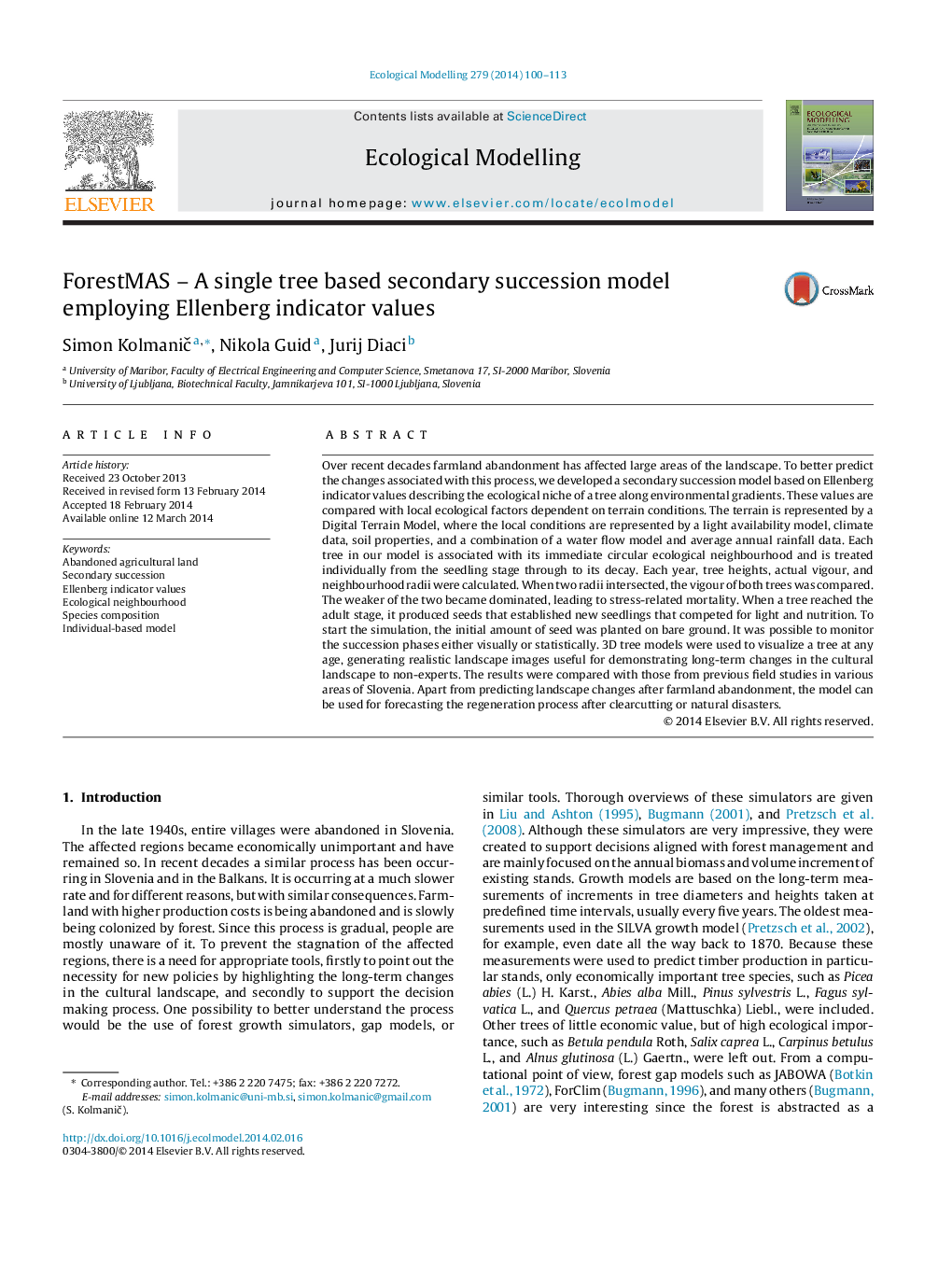| Article ID | Journal | Published Year | Pages | File Type |
|---|---|---|---|---|
| 4375978 | Ecological Modelling | 2014 | 14 Pages |
Abstract
Over recent decades farmland abandonment has affected large areas of the landscape. To better predict the changes associated with this process, we developed a secondary succession model based on Ellenberg indicator values describing the ecological niche of a tree along environmental gradients. These values are compared with local ecological factors dependent on terrain conditions. The terrain is represented by a Digital Terrain Model, where the local conditions are represented by a light availability model, climate data, soil properties, and a combination of a water flow model and average annual rainfall data. Each tree in our model is associated with its immediate circular ecological neighbourhood and is treated individually from the seedling stage through to its decay. Each year, tree heights, actual vigour, and neighbourhood radii were calculated. When two radii intersected, the vigour of both trees was compared. The weaker of the two became dominated, leading to stress-related mortality. When a tree reached the adult stage, it produced seeds that established new seedlings that competed for light and nutrition. To start the simulation, the initial amount of seed was planted on bare ground. It was possible to monitor the succession phases either visually or statistically. 3D tree models were used to visualize a tree at any age, generating realistic landscape images useful for demonstrating long-term changes in the cultural landscape to non-experts. The results were compared with those from previous field studies in various areas of Slovenia. Apart from predicting landscape changes after farmland abandonment, the model can be used for forecasting the regeneration process after clearcutting or natural disasters.
Keywords
Related Topics
Life Sciences
Agricultural and Biological Sciences
Ecology, Evolution, Behavior and Systematics
Authors
Simon KolmaniÄ, Nikola Guid, Jurij Diaci,
